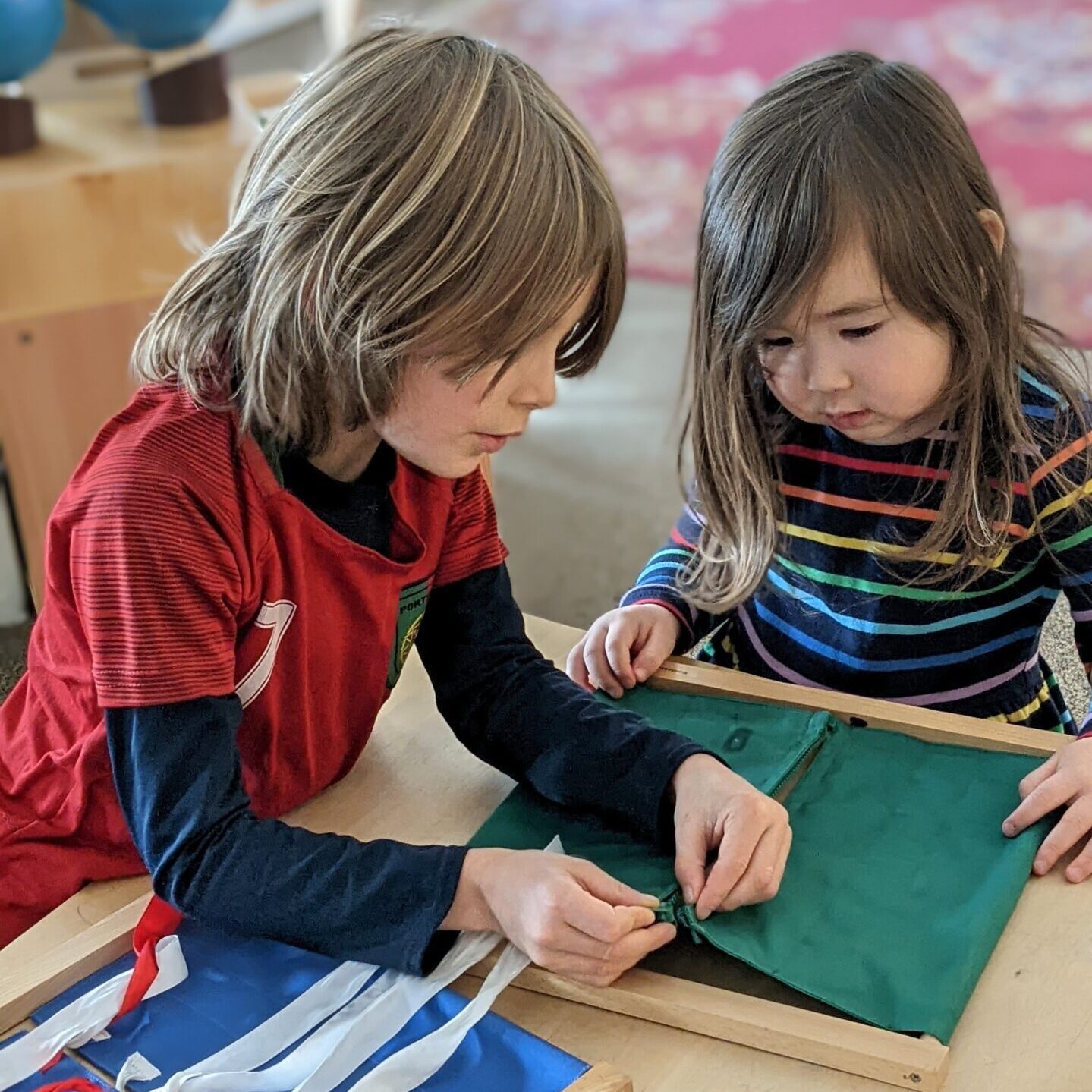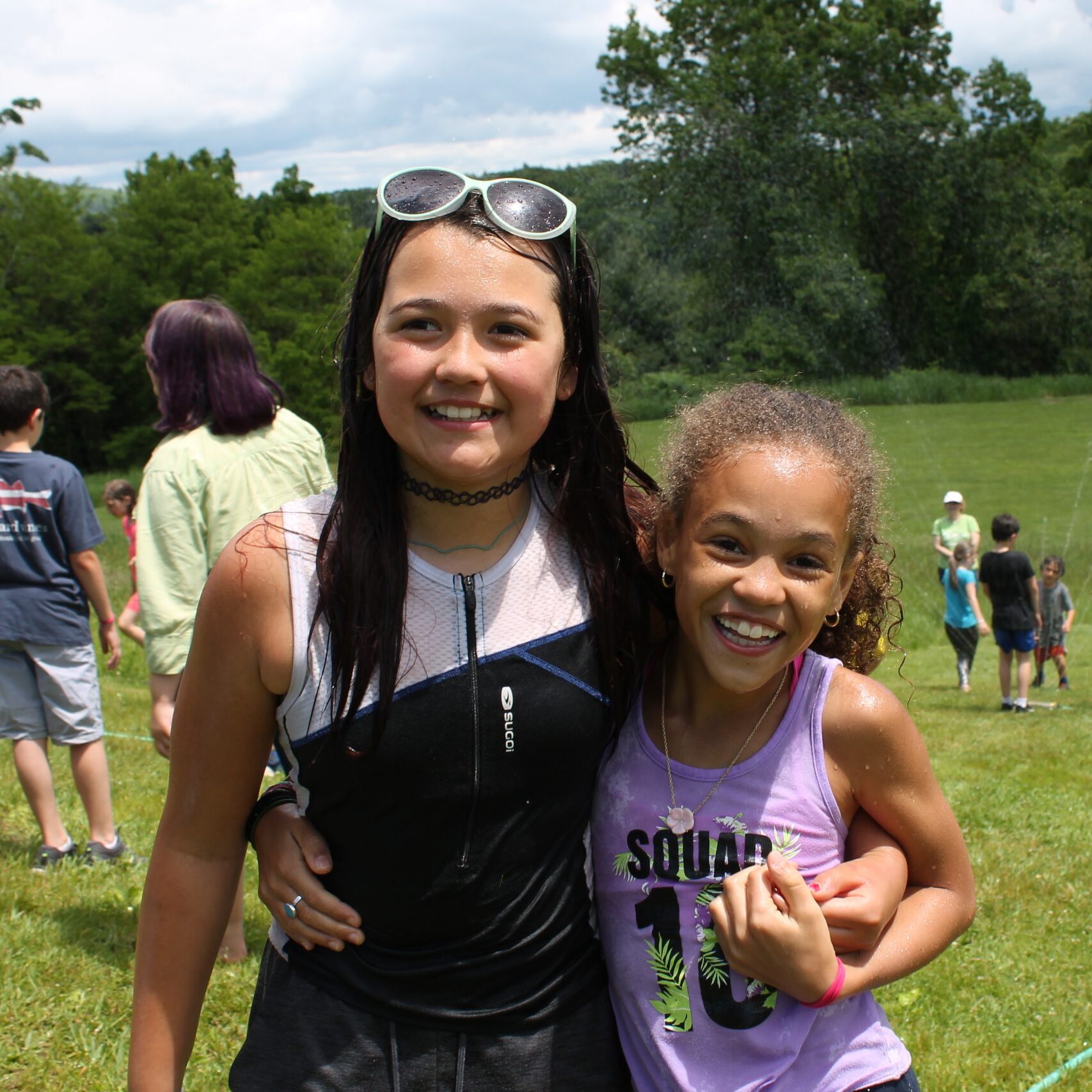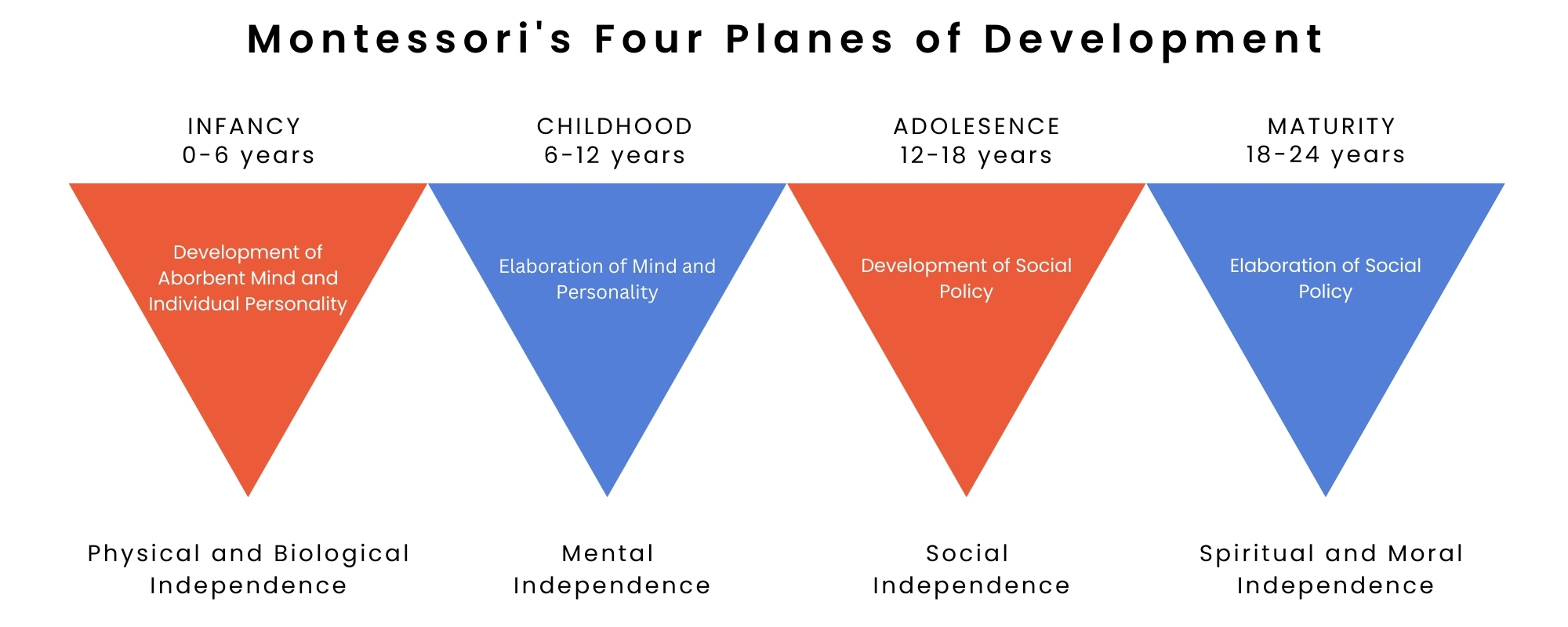
Children acquire knowledge through experience in the environment.

The Montessori classroom and curriculum is intentionally designed to be a three-year program in the same classroom:
These configurations are not arbitrary, but are based on the planes of development, or four distinct periods of growth: 0-6 years; 6-12 years; and 18-24 years. Maria Montessori (and other developmental theorists, like Jean Piaget and Erik Erikson) confirmed that children develop through a series of observable stages, each with specific needs and predispositions – cognitive, social, physical, moral, and emotional… each plane is divided into two sub-planes, on which the Montessori multi-age classrooms are based. (Cynthia Brunold-Conesa, AMS Family Connection, Oct ‘ 22)

Ideally, a child’s first year is spent as a “Younger”, where they are introduced to the Montessori materials and learn the classroom and work expectations from the Olders, then their second year as a “Middler”, where they gain confidence and practice taking on more responsibilities, and finally their third year as an “Older”, where they are relied upon by the community to help the Youngers and lead the community. In that final year, we see many skills, both social and academic, all come together in a sort of capstone year, as these older students become the leaders and tone-setters for the classroom. To fulfill this role in their development and in the classroom community successfully, students need to have had previous years of experience in the classroom, in order to become confident with the Montessori materials and expectations and capable of the level of independence required to thrive in a Montessori setting.
New students are more successful when entering into a classroom at the beginning of the 3 year (or 2 for Toddler Program and Middle School) cycle. The ideal time to start, and applications that will receive priority, are for:
The middle year of the cycle could potentially work out as a transition year into the school. However, entering during the final year of a program cycle can be challenging for a student new to Montessori and is not preferred. Additionally, for a student who has been in a more traditional educational environment, the adjustment period needed to adapt to the independence expected in a Montessori environment is difficult while also being the oldest in the classroom, and can often be problematic.
As such, as a school, we prioritize applicants who are transferring in for the first year of a program, and rarely accept students for the final year of a program. We do occasionally make an exception, for a child coming from another Montessori school or a staff child, for example.